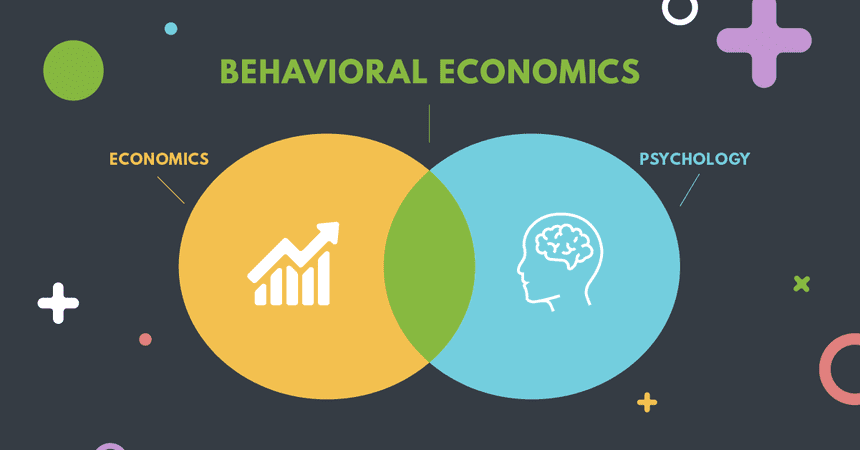
A New Approach to Behavioral Economics: How to Take Language Preferences into Account in Everyday Conversations
Title
A New Approach to Behavioral Economics: How to Take Language Preferences into Account in Everyday Conversations
Author
1. Kalpna Reddy,
Student, Sardar Patel University, Anand, India
2. Jivraj Mehta,
Professor, Sardar Patel University, Anand, India
Abstract
This paper explores the integration of social and moral preferences in economic decision-making, highlighting the significance of fairness and ethical considerations. Models like Fehr and Schmidt's inequity phobia (1999) and Bolton and Ockenfels' ERC (2000) demonstrate that people value relative distribution and fair treatment. Additionally, moral preferences, influenced by strong ethical principles, can lead individuals to act against their financial interests, as seen in deontological ethics (Kant, 1785). The impact of language on behavior is also examined, with framing and metaphors playing crucial roles in shaping perceptions and actions. Liberman et al. (2004) provide evidence that linguistic framing affects cooperation. This paradigm shift in behavioral economics emphasizes the need for new models and experimental setups that consider language's influence on preferences and decision-making, aiming for a more holistic understanding of human behavior in economic contexts.
Keywords
Conclusion
A significant shift is about to occur in behavioral economics. Unlike conventional economic models, this one considers the influence of language selection on decision-making in social relationships. To completely comprehend the complex ways language influences human behavior, new methods of theory and experimentation are required due to this paradigm shift. Incorporating social, moral, and linguistic aspects will lead to a more complete and realistic representation of how individuals act in economic settings as academics delve further into this study area.
Author Contrubution
The author handled all aspects of the study, including its design, data collection, analysis, and manuscript preparation.
Funding
This work did not receive any specific grant from funding agencies in the public, commercial, or non-profit sectors for its research, authorship, or publication.
Conflict of Interest
The authors state that they have no conflicts of interest regarding this article.
Data Sharing Statement
This article does not involve the sharing of data.
Software And Tools Use
This study does not pertain to any software or tools usage.
Acknowledgements
I am grateful for the expertise and help provided by all who contributed to this study and manuscript, and for the comments from anonymous reviewers.
Corresponding Author
Kalpna Reddy
Sardar Patel University, Anand, Student, India
Jivraj Mehta
Sardar Patel University, Anand, Professor, India
Copyright
Copyright: ©2025 Corresponding Author. This is an open access article distributed under the terms of the Creative Commons Attribution License , which permits unrestricted use, distribution, and reproduction in any medium, provided the original author and source are credited.
Reddy, Kalpna, and Mehta, Jivraj. “A New Approach to Behavioral Economics: How to Take Language Preferences into Account in Everyday Conversations.” Scientific Research Journal of Business, Management and Accounting, vol. 2, no. 1, 2024, pp. 4-6, https://isrdo.org/journal/SRJBMA/currentissue/a-new-approach-to-behavioral-economics-how-to-take-language-preferences-into-account-in-everyday-conversations
Reddy, K., & Mehta, J. (2024). A New Approach to Behavioral Economics: How to Take Language Preferences into Account in Everyday Conversations. Scientific Research Journal of Business, Management and Accounting, 2(1), 4-6. https://isrdo.org/journal/SRJBMA/currentissue/a-new-approach-to-behavioral-economics-how-to-take-language-preferences-into-account-in-everyday-conversations
Reddy Kalpna and Mehta Jivraj, A New Approach to Behavioral Economics: How to Take Language Preferences into Account in Everyday Conversations, Scientific Research Journal of Business, Management and Accounting 2, no. 1(2024): 4-6, https://isrdo.org/journal/SRJBMA/currentissue/a-new-approach-to-behavioral-economics-how-to-take-language-preferences-into-account-in-everyday-conversations
996
Total words472
Unique Words43
Sentence21.837209302326
Avg Sentence Length0.28939859559046
Subjectivity0.061739152320548
PolarityText Statistics
Viewed / Downloads
Total article views: 256 (including HTML, PDF, and XML)| HTML | XML | Total | |
|---|---|---|---|
| 172 | 44 | 40 | 256 |
Viewed (geographical distribution)
Thereof 256 with geography defined and 0 with unknown origin.